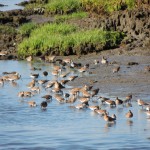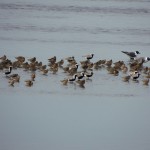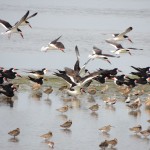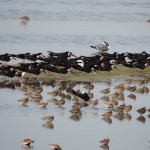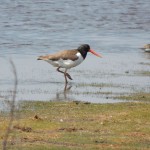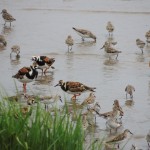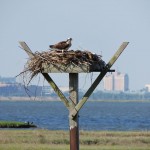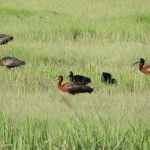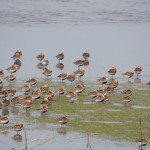20 May 2015 Jake’s Landing Rd NJ. Along the New Jersey coast, close enough to Atlantic City to be a probable distraction to birder office-workers, is one of the most wonderful wildlife refuges ever, the Edwin B. Forsythe National Wildlife Refuge. Quite what Mr. Forsythe had to do with it and why his name has supplanted the earlier far more evocative maritime name of Brigantine National Wildlife Refuge, I’m not sure. But that’s U.S. politics, none of my business, and more significantly, I don’t suppose the thousands of birds that live and feed there, care one amphipod’s antenna whose name is glorified.
We spent the best part of the day prowling the twelve-kilometer roadway around the estuarine reserve and scored multiple jaw-dropping sightings of birds. It was quite cool, verging on cold, with a northerly wind blowing and I could only begin to imagine what a wickedly exposed and bone-numbing place it would be in February. Still, the birds knew it was indeed May and there was more on their minds than where the wind was coming from.
Starting with an early sighting of a group of Glossy Ibis, the day just got better and better. Mud flats with scampering Semi-palmated Plovers, Least Sandpipers and Snowy Egrets were flanked by wide expanses of salt-marsh where Ospreys on nest platforms are commonplace and singing Seaside Sparrows every hundred metres or so, stake out their territory. Overhead were squealing Least and Forster’s Terns strategizing to push each other from patches of key shoreline. At one stop we watched a large group of dozing Black Skimmers and Dunlin, every now and then an imagined alarm sent a few of them wheeling around, maybe it was really just about getting some wing-stretching exercise, I’m not sure. This gallery of photos from the day, gives I hope, some idea of the richness of Brigantine. (Visible only on the website, not if you’re reading this as an email.)
But despite everything that Ed Forsythe could produce, my Bird of the Day was yet to come. As the day wound down, and we pondered our late day birding, my companion suggested that we might want to make one last ditch effort to find a Saltmarsh Sparrow; his nemesis bird. So we spent a couple of pre-dusk hours at a rather down-at-the-heels, former fisherman’s dock at the edge of a tidal inlet sorting through various false alarms: calling Clapper Rails, a skulking Least Sandpiper and Seaside Sparrows that refused to change identity. Finally with light fading, no Saltmarsh Sparrows, and Black Flies making it increasingly difficult to concentrate, we left the salt marshes.
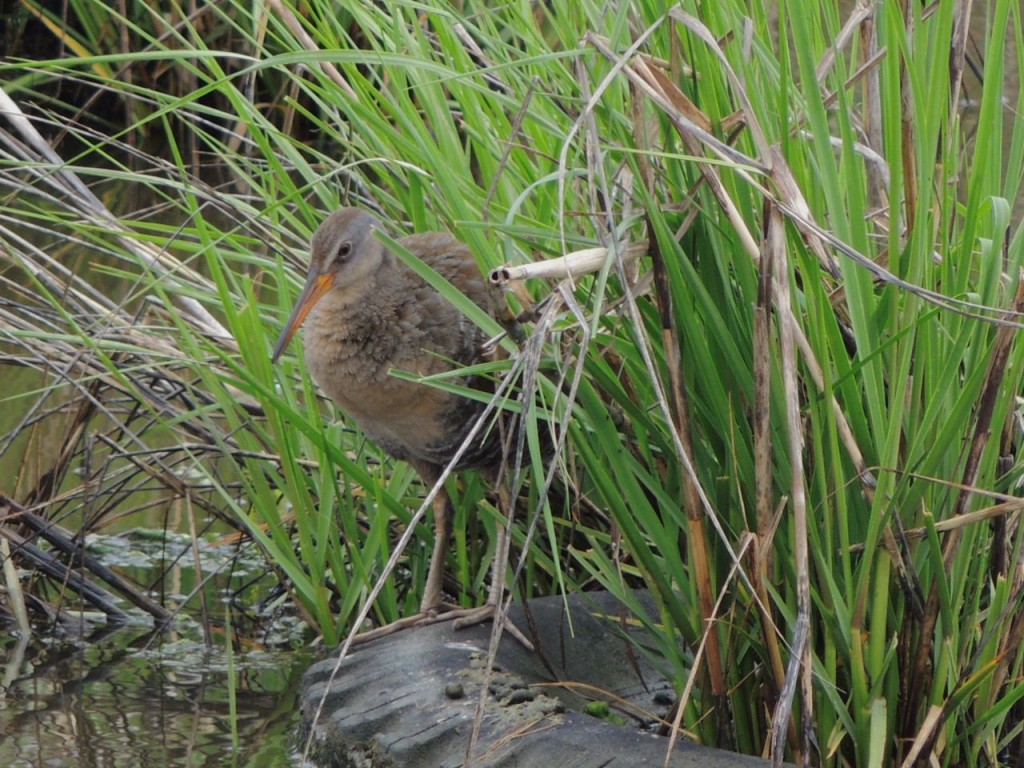
The way back to the main road led through a large forested area where, according to reports, a Chuck Will’s Widow was said to be. I’m a fan of Chuck Will’s Widows and all of its near-relatives, collectively known as Nightjars or Goatsuckers. They are a marvelously named group of odd-looking birds with equally odd habits, calls and in some cases, odd onomatopoeic names. The collective name Goatsucker, refers to the ancients’ belief that while the goatherd slept, these birds sucked the she-goats udders and thereby blinded her; quite why they’d bother to suck goats is beyond me. The familiar names: Chuck Will’s Widow and Whip-poor-will, refer to their far-carrying calls as they fly circuits around their territory.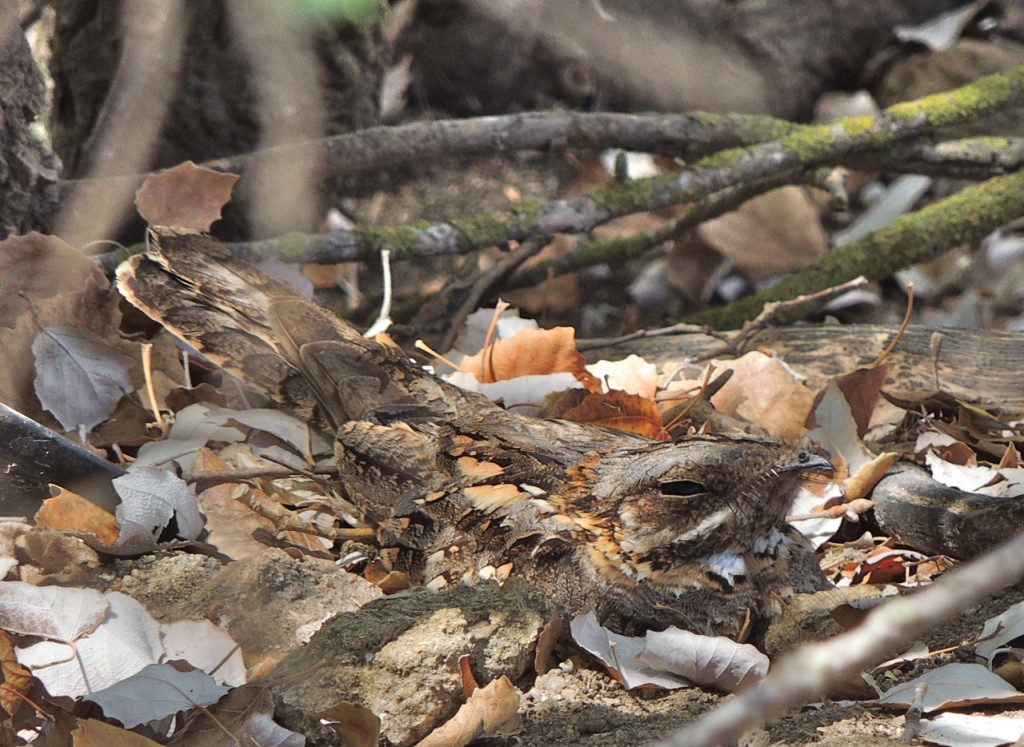
This picture taken in Spain last year of a Red-necked Nightjar is pretty much what they all look like. Exquisitely camouflaged, they spend the day out of sight just waiting for nightfall.
Anyway, despite several quiet listening-stops at the side of the forest road, the putative Chuck Will’s Widow eluded us . Finally as we left to go – and you’ve probably guessed how this is going to end – we made one last stop. Almost immediately we heard something. Getting out (ignition key removed to silence the pitiful dinging of an insecure car) we heard it; a Chuck Will’s Widow doing its rounds. If you say its name aloud (not whispered to yourself) clipped and with the emphasis as follows,CHK–whi-WHDo you’ll get some idea of its call: then repeat a thousand times. Or better yet follow this link for a recording. I was ecstatic! It’s been some thirty years since I last heard a Chuck Will’s Widow; and I have certainly never seen one; with Nightjars it’s all auditory for me. They’re almost never seen or heard in Ontario and besides they’re virtually invisible anyway, so it’s up to the imagination and, as night falls, the imagination is a powerful magnifier.
